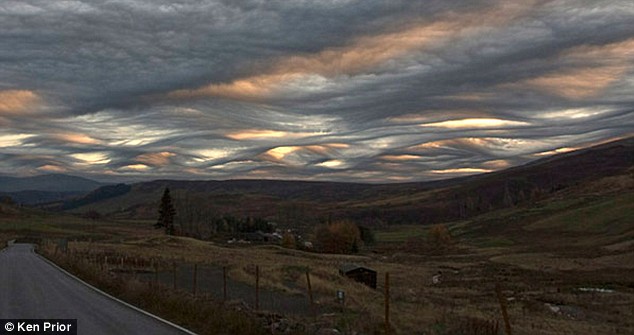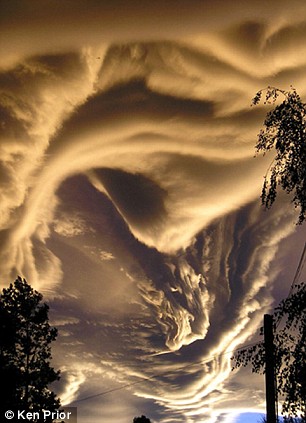DavidS
Anti-Tea Party Member
I don't know much about this stuff, so I'm not sure whether this article which appeared in a UK newspaper today will be of interest (or contentious).

Whipped into fantastical shapes, these clouds hang over the darkening landscape like the harbingers of a mighty storm.
But despite their stunning and frequent appearances, the formations have yet to be officially recognised with a name.
They have been seen all over Britain in different forms - from Snowdonia to the Scottish Highlands - and in other parts of the world such as New Zealand, but usually break up without producing a storm.
And some experts believe the stormy weather phenomenon deserves its very own classification.
Experts at the Royal Meteorological Society are now attempting to make it official by naming it 'Asperatus' after the Latin word for 'rough'.
If they are successful, it would be the first variety of cloud formation to be given a new label in over half a century.
[...]
The Royal Meteorological Society is now gathering detailed information for the days and locations where the asperatus clouds have been seen in an attempt to understand exactly what is causing them.
Officials will then apply to the UN's World Meteorological Organisation in Geneva to have the new cloud type considered for addition into the International Cloud Atlas, the system used by meteorologists across the globe.


More at this link

Whipped into fantastical shapes, these clouds hang over the darkening landscape like the harbingers of a mighty storm.
But despite their stunning and frequent appearances, the formations have yet to be officially recognised with a name.
They have been seen all over Britain in different forms - from Snowdonia to the Scottish Highlands - and in other parts of the world such as New Zealand, but usually break up without producing a storm.
And some experts believe the stormy weather phenomenon deserves its very own classification.
Experts at the Royal Meteorological Society are now attempting to make it official by naming it 'Asperatus' after the Latin word for 'rough'.
If they are successful, it would be the first variety of cloud formation to be given a new label in over half a century.
[...]
The Royal Meteorological Society is now gathering detailed information for the days and locations where the asperatus clouds have been seen in an attempt to understand exactly what is causing them.
Officials will then apply to the UN's World Meteorological Organisation in Geneva to have the new cloud type considered for addition into the International Cloud Atlas, the system used by meteorologists across the globe.


More at this link